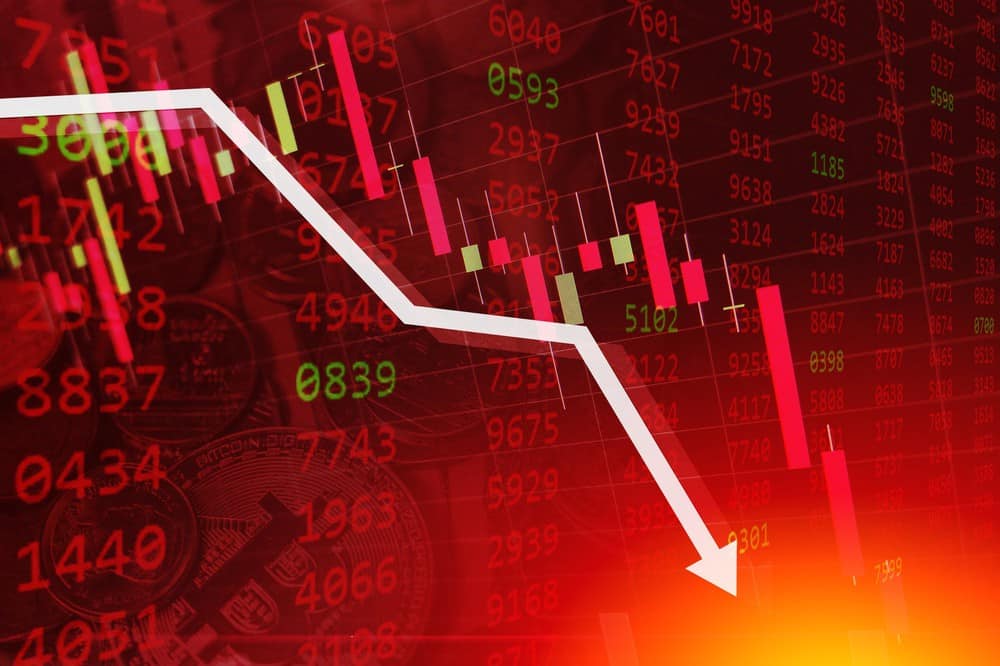There’s a disconnect today between how the markets are performing and the strength of the overall economy. Even though tens of millions of Americans are collecting unemployment benefits and the coronavirus pandemic is nowhere near over, the markets have continued to rally.
Over the past three months, the S&P 500 is up 14%, and year-to-date it is down just 2% — for comparison, when the markets crashed in March, the index was down nearly 30% from where it started the year. The Nasdaq also hit a record high in July.
It’s evident at this point that another crash will happen; the only question is when. Here’s why investors should be bracing for a possible crash as early as this month.
Coronavirus cases are spiking again
COVID-19 was the catalyst behind the crash that took place in March. It was on March 11 that the World Health Organization officially declared COVID-19 a pandemic. Sports leagues began suspending their seasons, and many businesses either closed down their operations entirely or limited them to delivery or pickup.
The aim of those moves was to limit the spread of the pandemic. However, while daily cases of the coronavirus pandemic did start to decline and show stability over the coming months, by late June that had all changed, with daily new cases of COVID-19 reaching more than 40,000 in the U.S. — a record high at the time. That number is only continuing to rise in July, with daily new cases now hitting over 50,000.
The spike is likely happening because cities are reopening without people following social-distancing and health protocols. Because of this, some states putting certain lockdowns back into place once again to try and limit the spread of COVID-19 once more.
As lockdowns and concerns surrounding the pandemic are again on everyone’s minds, that’s likely to translate into more apprehension in the markets, especially if it means businesses could be facing a difficult third quarter this year. Investors aren’t even sure yet how bad the second quarter’s been — but they will know soon.
Earnings season is coming up
Another big reason investors should be worried about the markets is that many notable companies will begin reporting on their second-quarter results later this month. These results will be key, because they’ll cover the period of April through the end of June — months when lockdowns were in full effect and companies were feeling the brunt of COVID-19.
During the first quarter, which for many companies only went up until the end of March, the pandemic was still in its early stages and the results still included two full months — January and February — during which the coronavirus was still not a significant concern for the U.S. markets.
When companies report on their Q2 results, however, investors could be in for a reality check that reveals how bad the quarter’s been. And that, combined with growing concerns about what’s ahead for COVID-19 as cases continue to rise, could generate some negativity in the markets.
One company to watch is Facebook (NASDAQ:FB). The social media company releases its quarterly earnings July 29, and its stock is currently trading around its 52-week highs.
That’s bizarre to see, given that companies are cutting back on spending in general — the cost of placing ads on the social media site in March was down as much as 20% from February. In addition, many companies have decided against advertising on Facebook because of its policies regarding the spread of hate and misinformation across the social networking platform.
These are some serious headwinds that Facebook investors need to worry about, and the stock’s current valuation doesn’t reflect that uncertainty — the company’s shares are up 19% year to date. It’s further proof that the markets are disconnected from reality, and a reckoning could begin as early as this month, when Facebook and other big companies begin to report their earnings and provide guidance on upcoming quarters.
What should investors do to prepare for a crash?
It’s important for investors to start looking carefully at the stocks in their portfolios and their relative valuations. Cannabis stocks, in particular, are among some of the most expensive in the markets given their general lack of profitability and low sales numbers. A good example here is Cronos Group (NASDAQ:CRON), which is trading at a significantly higher valuation relative to sales than many of its peers:

On May 8, Cronos reported first-quarter revenue of $8.4 million, which was close to triple the $3 million in sales it recorded in the prior-year period. But even amid such impressive growth, the stock is still trading at a significant multiple to its sales. It doesn’t help that the Ontario-based pot producer’s incurred an operating loss in each of its last 10 quarterly results.
Cronos reported an inventory writedown of $8 million in Q1 and admitted that there could still be more adjustments in the future as a result of “pricing pressures.” But with more than $1.1 billion in cash and cash equivalents as of March 31, the company’s in good shape to weather any adversity.
However, simply surviving shouldn’t be a reason for investors to buy shares of the cannabis company. Over the past year, Cronos’ stock is down 58%, only slightly outperforming the Horizons Marijuana Life Sciences ETF (OTC:HMLS.F), which is down by 63%. And if there’s a crash and sell-off to follow in the markets, an overpriced stock like Cronos could suffer further losses, making it a risky investment to hang on to right now.

